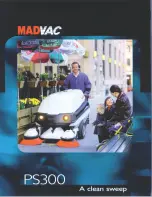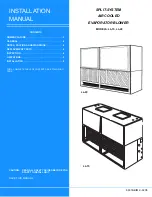
16
200947 - WALk BEhiND BLOWER
OPERATiON
Add fuel
CAUTiON
Use regular unleaded gasoline with a minimum octane rating
of 85 and an ethanol content of less than 10% by volume.
DO NOT light or smoke cigarettes.
DO NOT mix oil and gasoline.
DO NOT overfill the tank. Fill tank to approximately ¼ in.
(6.4 mm) below the top of the tank to allow for gasoline
expansion.
Always turn the blower off and let cool for minimum of two
minutes before removing the gasoline cap.
Afterwards, loosen gasoline cap to relieve pressure from the
gasoline tank.
Only fill or drain gasoline outdoors in a well-ventilated area.
Store fuel in a container approved for gasoline.
DO NOT pump gasoline directly into the blower at the gas
station. Always use an approved fuel container to transfer the
fuel to the gasoline tank.
DO NOT overfill the gasoline tank.
Always keep gasoline away from sparks, open flames, pilot
lights, heat and other sources of ignition.
WARNiNG
Pouring gasoline too fast through the fuel screen may result in
blow back of gasoline at the operator while filling.
WARNiNG
Always shut off engine before fueling. Never add fuel to a
machine with a running or hot engine. Wait at least 2 minutes
to allow for cool down before refueling. Move at least 50’
(15 m) from refueling site before starting engine. Do no smoke
and stay away from open flames and sparks. Failure to safely
handle fuel could result in serious personal injury and or
property damage.
1. Use clean, fresh, regular unleaded gasoline with a minimum
octane rating of 87 and an ethanol content of less than 10%
by volume.
y b c
2. DO NOT mix oil with gasoline.
3. Remove the gasoline cap.
4. Slowly add gasoline to the tank. DO NOT OVERFILL. Gasoline
can expand after filling. A minimum of ¼ in. (6.4 mm) of
space left in the tank is required for gasoline expansion,
although more than ¼ in. (6.4 mm) is recommended. Gasoline
can be forced out of the tank as a result of expansion if
overfilled, and can affect the stable running condition of the
blower.
5. The approximate fuel level is shown on the fuel gauge on top
of the fuel tank.
6. Screw on the gasoline cap and wipe away any spilled fuel.
NOTiCE
Our engines work well with 10% or less ethanol blend
gasoline. When using ethanol-gasoline blends there are some
issues worth noting:
–
Ethanol-gasoline blends can absorb more water than
gasoline alone.
–
These blends can eventually separate, leaving water or a
watery goo in the tank, fuel valve and carburetor.
–
The compromised gasoline can be drawn into the
carburetor and cause damage to the engine and/or create
power performance problems.
–
There are only a few suppliers of fuel stabilizer that are
formulated to work with ethanol blend fuels.
–
Any damages or hazards caused by using improper fuel,
improperly stored fuel, and/or improperly formulated
stabilizers, are not covered by manufacturer’s warranty.
It is advisable to always shut off the fuel supply (where
applicable - not every unit has a fuel shut off), run the
engine to fuel starvation and drain the tank when the
equipment is not in use for more than a 30-day period.
–
See Storage instructions for extended non-use.
















































